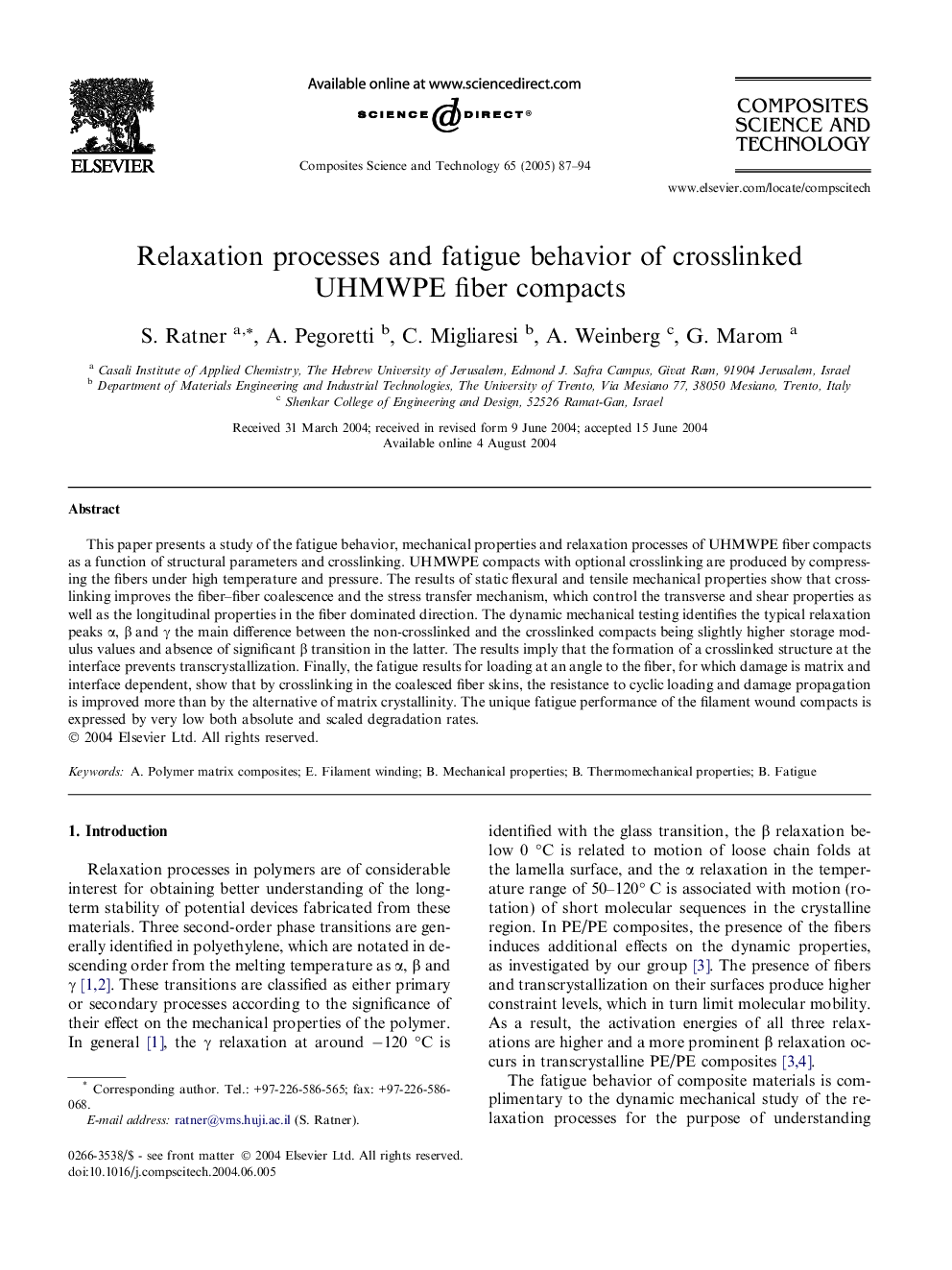| Article ID | Journal | Published Year | Pages | File Type |
|---|---|---|---|---|
| 10425409 | Composites Science and Technology | 2005 | 8 Pages |
Abstract
This paper presents a study of the fatigue behavior, mechanical properties and relaxation processes of UHMWPE fiber compacts as a function of structural parameters and crosslinking. UHMWPE compacts with optional crosslinking are produced by compressing the fibers under high temperature and pressure. The results of static flexural and tensile mechanical properties show that crosslinking improves the fiber-fiber coalescence and the stress transfer mechanism, which control the transverse and shear properties as well as the longitudinal properties in the fiber dominated direction. The dynamic mechanical testing identifies the typical relaxation peaks α, β and γ the main difference between the non-crosslinked and the crosslinked compacts being slightly higher storage modulus values and absence of significant β transition in the latter. The results imply that the formation of a crosslinked structure at the interface prevents transcrystallization. Finally, the fatigue results for loading at an angle to the fiber, for which damage is matrix and interface dependent, show that by crosslinking in the coalesced fiber skins, the resistance to cyclic loading and damage propagation is improved more than by the alternative of matrix crystallinity. The unique fatigue performance of the filament wound compacts is expressed by very low both absolute and scaled degradation rates.
Keywords
Related Topics
Physical Sciences and Engineering
Engineering
Engineering (General)
Authors
S. Ratner, A. Pegoretti, C. Migliaresi, A. Weinberg, G. Marom,
